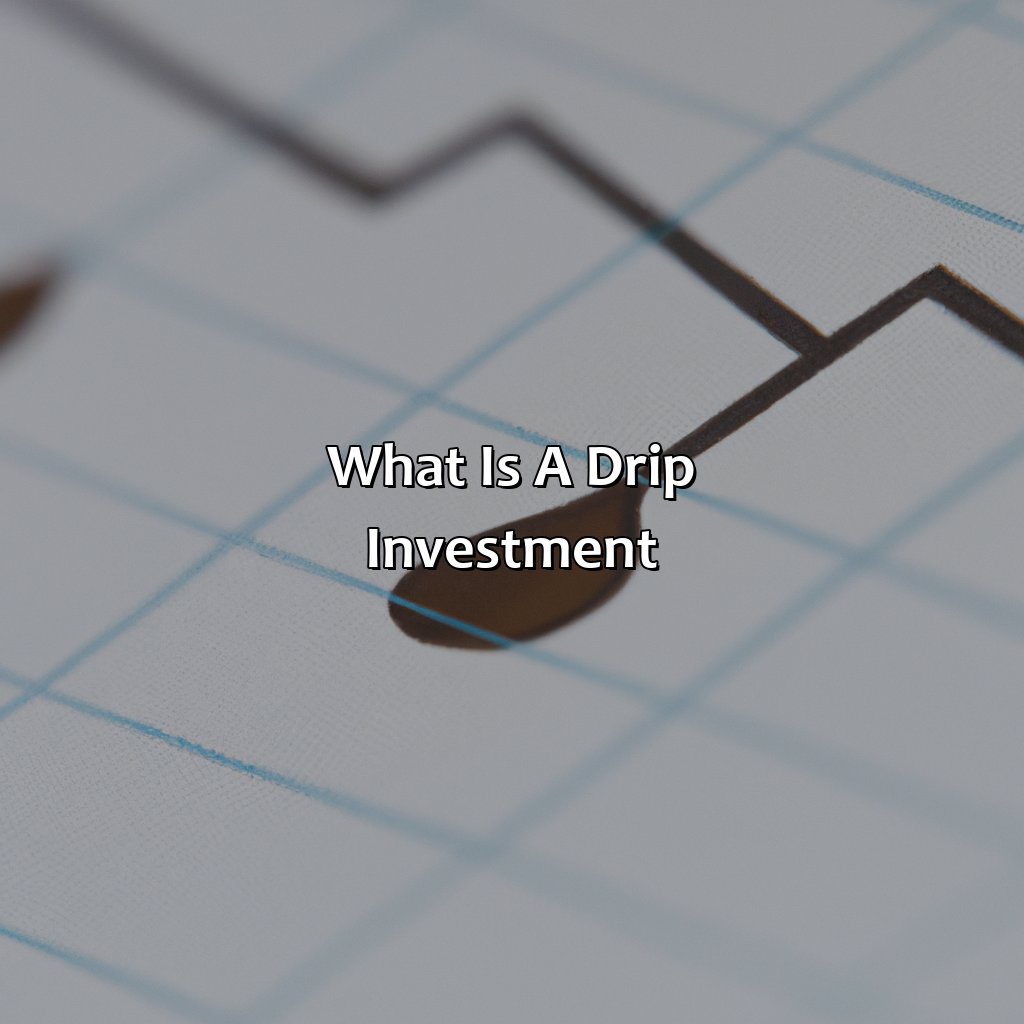What Is A Drip Investment?
Key Takeaway:
- Drip investment is a strategy for long-term wealth creation: Drip investing involves regularly investing small amounts of money into a company or fund over a period of time, allowing for the compounding effect to work and potentially generate significant returns over the long-term.
- Drip investment requires minimal investment: One of the advantages of drip investing is that it requires minimal investment, making it an accessible investment option for individuals who may not have large amounts of capital to invest upfront.
- Compounding effect is a key advantage of drip investment: Drip investing takes advantage of the compounding effect, where the returns on each investment are reinvested, potentially resulting in significant returns over time.
Are you curious about investing but find the world of finance overwhelming? Look no further than drip investments – an easy-to-use and low risk investment option you can use to grow your wealth. In this article, you’ll learn all about drip investment and how to get started.
What is Drip Investment?
What is a drip investment? To know, you must understand its definition and how it works. This part of the article will give you a short but complete overview. In addition, we will introduce you to different kinds of drip investment options that exist.
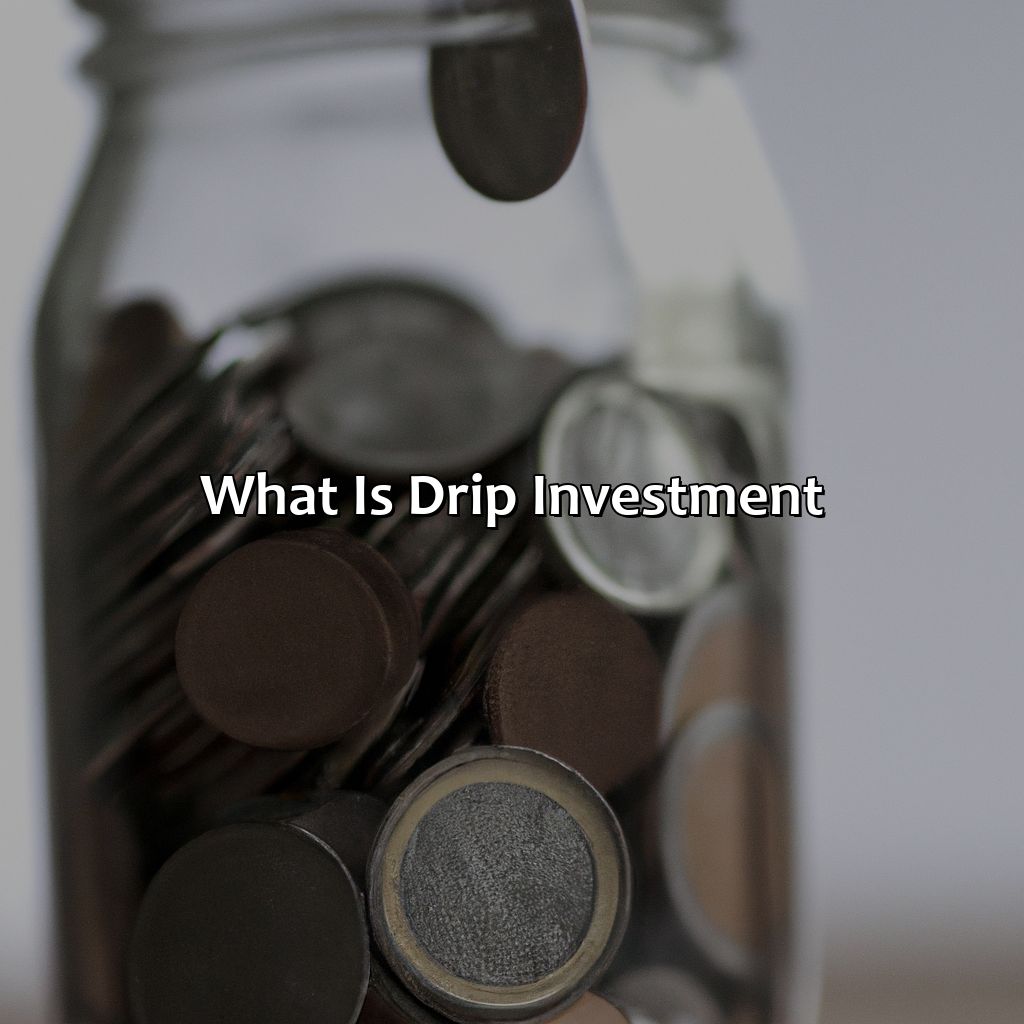
Image credits: retiregenz.com by Adam Washington
Definition and working
Drip investment, also known as dividend reinvestment plan, is a method of investment that allows shareholders to automatically reinvest their dividends back into the company’s stock. This helps in increasing the number of shares held and the value of one’s portfolio over time.
By enrolling in a drip investment plan, shareholders can choose to have their dividends reinvested in whole or in part. The reinvested earnings are used to purchase additional shares at market price, with no commission fees. This eliminates the need for investors to manually invest their dividends or pay commissions on each transaction.
Furthermore, drip investing can be used for small investments and long-term investments alike. It is a low-cost and convenient way to accumulate wealth over time while also potentially receiving regular income from dividends.
In addition to this, it is important to note that not all companies offer drip investment plans and some may have restrictions or requirements for enrollment. Therefore, it is recommended that investors do their research before engaging in such plans.
A real-life example of drip investment success is Warren Buffett’s strategy of using drip plans to accumulate wealth in his early years of investing. By reinvesting his Berkshire Hathaway dividends since 1967, he has been able to amass significant wealth and become one of the richest men in the world.
Why settle for a single drip when you can have a whole fountain? Explore the various types of drip investments and make it rain!
Types of Drip Investment
Drip Investment has various types that you should know about. These investment types are designed for a long-term financial strategy that can yield significant returns.
Types of Drip Investments include Dividend Reinvestment Plan (DRIP), Direct Stock Purchase Plan (DSPP) and Mutual Fund Drips.
| Investment Type | Description |
|---|---|
| Dividend Reinvestment Plan (DRIP) | An investment plan where dividends are reinvested to purchase additional shares |
| Direct Stock Purchase Plan (DSPP) | An investment plan where you can buy stocks directly from the company without a middleman |
| Mutual Fund Drips | An investment plan where earnings from a mutual fund are automatically reinvested into the same fund |
It is important to note that each type of Drip Investment has its own benefits and drawbacks but can be tailored towards your financial goals.
Consider doing further research on Drip investments to make informed decisions about your finances.
Don’t miss out on potential financial gains by not utilizing Drip Investments as part of your financial strategy. Take action today and explore the different types available to you.
Invest in drip and watch your money grow, like a leaky faucet that never gets fixed.
Advantages of Drip Investment
Maximize the benefits of drip investment and secure your future finances! Look into its advantages. Choose drip investment for long-term wealth. You’ll see the compounding effect over time. Don’t stress about investing a lot initially, just a minimal amount is required.
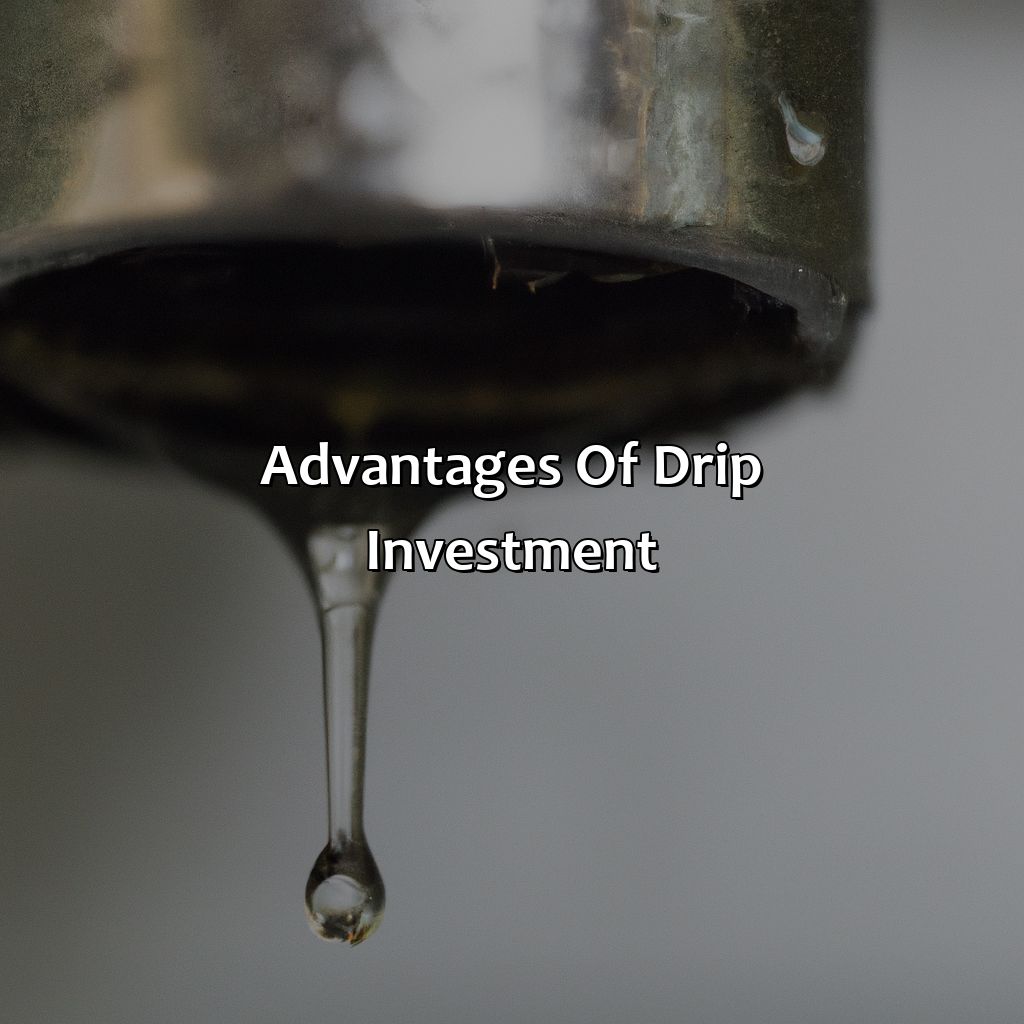
Image credits: retiregenz.com by Yuval Woodhock
Long-term wealth creation
Investments made through drip investment plans are an excellent way to achieve long-term wealth growth. By regularly investing small amounts, you gradually build a sizeable portfolio without overburdening yourself. Over the extended period, this translates into impressive returns and stable wealth accumulation, with minimized risk exposure. Opting for automatic reinvestment of dividends ensures that you earn compounded profits that generate more significant gains over time.
Drip investment delivers many benefits for individual investors looking to invest in various assets over the long term, such as stocks or mutual funds; it is also a flexible approach to create wealth accumulation through dividends that come from owning shares in a company. Another advantage is that drip investment is effortless and convenient, as your funds are automatically invested each time you make a purchase or receive dividends.
You can further maximize your long-term wealth creation by selecting quality companies known for steady stock performance and capital growth potential. Adopting buy-and-hold principles by holding onto assets for more extended periods can reduce trading commissions while accumulating more capital gains thanks to compounding returns over the years. Finally, seeking expert advice on selecting high-performing stocks with robust growth prospects enables you to tweak your investment portfolio accordingly and position it better towards generating passive income streams in the future.
Investing in drip may require minimal funds, but don’t worry, your penny-pinching ways won’t be judged – at least not until your bank account explodes with profits.
Minimal investment required
Investing in drip investment plans requires a minimal initial investment. This can be particularly beneficial for those who are starting their investment journeys or have smaller budgets to work with. By contributing small amounts regularly, investors can build a substantial portfolio over time.
In addition to allowing for small contributions, drip investments also typically have lower fees than traditional investing methods, making them a cost-effective option. This is because the funds are usually purchased in bulk and then distributed among investors, reducing transaction costs.
Another advantage of drip investments is that they provide a simple and convenient way to invest automatically. Once the initial setup is complete, investors don’t need to monitor their investments actively or manually purchase additional shares. The automated nature of these investments makes them an excellent choice for beginners or those who prefer a more hands-off approach.
One real-life example of the benefits of drip investing comes from Peter Lynch, one of the most successful fund managers in history. Lynch famously urged his wife’s friends and family members to invest just $1,000 in Fidelity’s Magellan Fund through a drip plan. Eventually, several of these individuals became millionaires thanks to their little-but-often contributions over time.
Compounding interest is like a snowball rolling down a hill, it may start small but it eventually becomes a financial avalanche.
Compounding effect
A powerful financial strategy for investors, Drip investing creates a compounding effect on investments. As the dividend payments are reinvested automatically, it adds to the earning potential of the stock. Additionally, this results in significant growth over time as profits are compounded on an exponential timeline.
The long-term benefits of Drip Investment enable consistent returns and reduces the need for constant monitoring. Due to automatic reinvestment of profit, investors can receive capital gains with minimal effort.
One unique benefit is that there is no minimum investment required for most stocks offered for Drip investing; thus, making it accessible for all investors to participate and earn stable returns in the long run.
An investor started with only $15,000 in stock through DRIPs and has reached millionaire status by purely using its compounding effect strategy.
Used efficiently, drip investment provides a reliable way of building wealth and creating financial stability over time.
Saving money has never been more depressing – welcome to the downside of drip investments.
Disadvantages of Drip Investment
Gotta know the cons of drip investing. Less control and lower liquidity. Let’s see how these drawbacks affect investment decisions. And how liquidity impacts your access to your money.
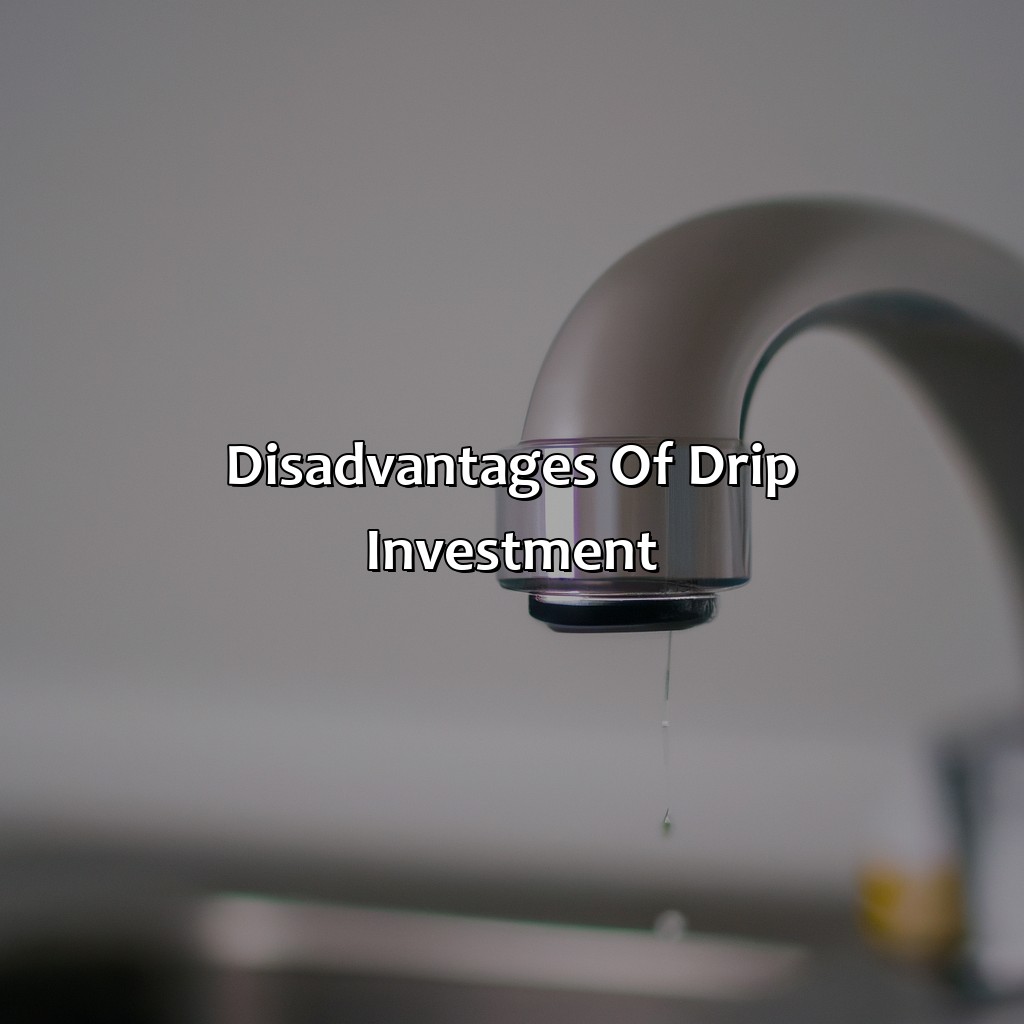
Image credits: retiregenz.com by Yuval Duncun
Less control over investment decisions
Investors using drip investment plans may have reduced capability to make significant decisions regarding their investments. This is because the plan auto-purchases predetermined amounts of shares with reinvested dividends. Although investors can set some criteria, such as the amount they want to invest per share, they would have limited control over the specifics of individual share purchases.
Furthermore, drip investors won’t be able to time purchases and sales for when stocks are at a favorable price. It’s also possible that they could miss out on investing in other potentially profitable companies or industries since the drip plan will only work with specific firms allowing dividend reinvestment.
In addition, it is crucial to carefully evaluate an organization’s dividend history before investing in a drip plan. According to a study by USA Today, approximately 200 of the S&P 500 organizations decreased their dividends from 2015-2021, and some were unable to pay dividends during this period.
It’s essential for investors who consider using dripping plans as part of their investment portfolio should conduct extensive research and analyze the risks before proceeding.
If you love the feeling of not being able to access your own money, then drip investments are perfect for you!
Lower liquidity
Investors face reduced marketability when trading using drip investments. This dampened flexibility leads to a loss of liquidity in their investment portfolios, limiting the speed at which shares can be converted into cash. Moreover, this reduction increases trading risk since smaller trades may drive the price up or down disproportionately, resulting in significant losses to an investor. Such illiquidity adds another layer of complexity for investors seeking quick access to larger sums of cash.
Additionally, investors overlook discounted purchase prices on new shares. New shares are set at par values at predetermined times and may have lower conversion costs than normal market transactions. Since most drips offer share discounts, if current market prices rise higher than the par values on subsequent offers, the investor would miss out on any potential gains.
In contrast to traditional trading options susceptible to short-term fluctuations primarily due to unanticipated events in surprise announcements such as mergers or acquisitions that distort skews from daily trading patterns, drip investments have been perceived with enhanced stability. For instance, while stocks’ sudden price drops lead to panic selling and swift price falls due to unstable pricing mechanisms involving high-frequency algorithmic traders that magnify hour-to-hour movements hundreds or thousands of times over regular public investors who trade slower through standard brokerage services, drip investments do not experience such disorders according to several financial analysts’ reports.
Alan, a young trader with years under his belt had previously engaged in dip investment options before shifting focuses increasingly investing and divesting manually quickly realized that drip liquidity constraints severely impeded managing his portfolios like he was accustomed to doing. Alan advises caution when considering select portfolios with low liquidity levels; hence they match only a fraction of prospective investor needs.
Why wait for a rainy day when you can start Drip Investing today?
How to start Drip Investment?
Choose a firm or fund to start drip investing with ease. Set up an account for drip investment. Start pouring money in. Every step is important for successful drip investment.
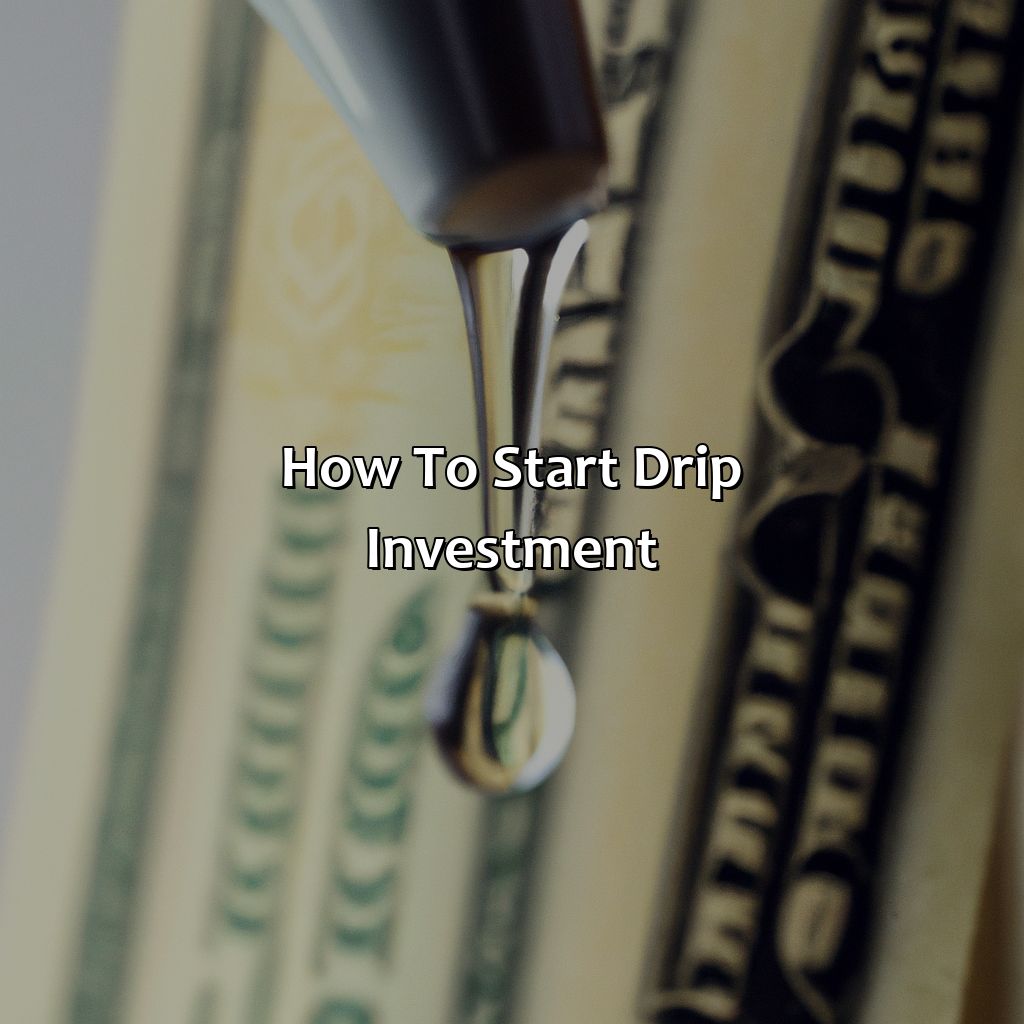
Image credits: retiregenz.com by Yuval Duncun
Choose a company or fund
To initiate drip investment, you should search for a suitable issuer or fund. This will help you in selecting the right investment plan based on your financial goals and risk appetite.
Below is a table representing the selection process of an issuer or fund:
| Factors to consider | Description |
|---|---|
| Financial Goals | Decide on short-term or long-term goals according to your preference, like retirement or education planning. |
| Risk Tolerance | Evaluate your comfort level with market fluctuations and select an issuer accordingly. |
| Investment Type | Consider investing in fixed income securities rather than volatile assets. |
| Fees Charged | Understand and compare the fees charged by different issuers. |
While choosing a company or fund, ensure that it matches your financial objectives with its investment strategies. Moreover, it’s crucial to check the credibility of your issuer before investing.
Here are some suggestions to help you make the right choice:
- Research – Conduct thorough research about the issuers and funds before selecting one.
- Diversify – Spread out your investments across various companies and sectors to reduce potential risks.
- Analyze Expense Ratio – Lower expense ratios indicate higher returns; therefore, choose an issuer with lower expense ratios.
By following these suggestions, investors can start their drip investment journey successfully while ensuring their financial stability in the long run.
Starting a Drip account is like planting a money tree that grows on autopilot.
Set up a Drip account
Setting up a Drip Investment Portfolio
Drip investment is a passive investment strategy that enables investors to purchase shares automatically at regular intervals. To set up this portfolio, follow these five easy steps:
- Choose a Brokerage Firm: Select an online brokerage firm, like Robinhood or Charles Schwab, with no commission charges.
- Establish an Account: Create an account by filling out necessary details and selecting an option for opening an individual or joint account.
- Connect Your Bank Account: Link your bank account to the selected broker’s platform to deposit money for automatic investments.
- Set Up Automatic Investments: Decide on the amount and frequency of the investment and schedule them automatically.
- Start Investing: Once the above steps have been completed, sit back and watch your savings grow with compounding interest.
It’s essential to clarify that dividend reinvestment plans are not created equal; thus researching ETFs or stocks before investing is critical.
Make a wise decision now, start your Drip investment portfolio today! Don’t miss out on the potential ability to build wealth through automated investments. Start investing in drip funds and watch your savings slowly but surely drip away.
Start investing
Begin Investing with Drip Investment Plans – a simple and effective approach to invest small amounts regularly. Through this method, a fixed amount is withdrawn from the investor’s account at regular intervals and invested in mutual funds. By utilizing the power of compounding, investors can gain significant returns over time.
Drip Investment eliminates the complexities of timing and market fluctuations that come with lump sum investing. It enables people to focus on long-term goals and gradually build their portfolios. Moreover, it is an excellent tool for those looking to start investing without large initial deposits.
One crucial factor to consider when choosing a Drip Investment Plan is fees – ensure that you are aware of any charges associated with transactions or maintenance costs. Another aspect to keep in mind is monitoring your investments’ performance periodically.
Through consistent efforts, even small amounts invested over time can accumulate into sizeable savings. This makes Drip Investment an attractive option for beginners who want to develop consistent investment habits.
John invested $50 per month using a Drip Investment Plan, starting at age 25 and continuing through till he was 65. At the end of 40 years, his total investment of $24,000 grew to almost $340,000, achieving 12% annual returns. This example highlights how Drip Investments can help individuals achieve their financial goals in the long run by following disciplined investment practices.
Some Facts About Drip Investment:
- ✅ A drip investment is a type of investment strategy that involves reinvesting dividends to purchase additional shares in the same company. (Source: Investopedia)
- ✅ Drip investments can help investors take advantage of compounding returns and potentially earn higher returns over time. (Source: The Balance)
- ✅ Many publicly traded companies offer dividend reinvestment plans (DRIPs) which allow investors to automatically reinvest their dividends. (Source: Forbes)
- ✅ Drip investments can be a good choice for long-term investors who want to gradually build their investment portfolio over time. (Source: NerdWallet)
- ✅ Drip investments may also offer tax benefits, as investors only have to pay taxes on the dividends they receive, not on the reinvested shares. (Source: The Motley Fool)
FAQs about What Is A Drip Investment?
What is a drip investment?
A drip investment, also known as a dividend reinvestment plan, is a method of investing in which dividends earned from a company’s stock are automatically reinvested back into the stock. This allows for the purchase of additional shares of the stock without having to pay additional fees.
How does a drip investment work?
When you participate in a drip investment plan, any dividends you earn are automatically used to purchase additional shares of the company’s stock. This can help to increase your overall investment in the company over time and can also help to compound your earnings.
What are the benefits of a drip investment?
One of the main benefits of a drip investment is that it allows you to easily and consistently reinvest dividends back into the company’s stock. This can help to increase your overall investment in the company and can also help to compound your earnings over time. Additionally, drip investments often come with lower fees than traditional investment methods.
Are there any risks associated with drip investments?
Like any investment, there is always a certain level of risk involved with drip investments. The value of the company’s stock can fluctuate based on a variety of factors, and there is always the possibility of losing money. However, drip investments are generally considered to be a fairly safe and reliable investment method.
Can anyone participate in a drip investment plan?
Many companies offer drip investment plans to their shareholders, so if you own stock in a particular company, it is possible that you may be eligible to participate in a drip investment plan. However, it is always important to check with the company and read the plan’s terms and conditions before signing up.
How do I get started with a drip investment plan?
If you are interested in participating in a drip investment plan, the first step is to research which companies offer these plans and determine which ones might be a good fit for your investment goals. From there, you can reach out to the company to learn more about the plan and how to sign up.
